Study on Relative Accuracy and Verification Method of High-Definition Maps for Autonomous Driving
Abstract
:1. Introduction
2. High-Definition Maps and Accuracy
2.1. Accuracy and Precision in Mapping
2.2. Accuracy in HDMs for AD
2.3. Traditional Method for Accuracy
2.4. Limitations of Traditional Methods
2.4.1. Finding the Same Feature Point Pair
2.4.2. Differences between Lane Heading and Side Directions
2.5. Elemental Classification and Decomposition of HDMs
3. Materials and Methods
3.1. Case Study
3.1.1. Equipment and Environment
3.1.2. Data Acquisition
3.2. Methodology
- Calculate the corresponding closet point in the target point set for each point in the source point set.
- Compute the rigid transformation that minimizes the average distance of the above corresponding point pairs. Calculate the rotation and translation parameters.
- The new point set is obtained by using the rotation and translation parameters found in 2, for the source point set.
- Determines if the iterative computation stop condition is met. If it is, the calculation is stopped, if not, the new point set obtained in 3 is used as the new source point set and input into 1 to continue the iterative calculation.
3.2.1. Lane-Heading Direction
3.2.2. Lane-Side Direction
4. Results
4.1. Results for Lane-Heading Direction
4.2. Results for Collinear Direction
4.3. Results of Traditional Methods
5. Discussion
Author Contributions
Funding
Institutional Review Board Statement
Informed Consent Statement
Data Availability Statement
Conflicts of Interest
References
- Liu, J.; Zhan, J.; Guo, C.; Lei, T.; Li, Y. Data Logic Structure and Key Technologies on Intelligent High-precision Map. J. Geod. Geoinf. Sci. 2020, 3, 1–17. [Google Scholar]
- Liu, R.; Wang, J.; Zhang, B. High Definition Map for Automated Driving: Overview and Analysis. J. Navigation 2020, 73, 324–341. [Google Scholar] [CrossRef]
- Levinson, J.; Montemerlo, M.; Thrun, S. (Eds.) Map-Based Precision Vehicle Localization in Urban Environments. In Robotics: Science & Systems III, June; Georgia Institute of Technology: Atlanta, GA, USA, 2007. [Google Scholar]
- Chi, G.; Wenfei, G.; Guangyi, C.; Hongbo, D. A lane-level LBS system for vehicle network with high-precision BDS/GPS positioning. Comput. Intell. Neurosci. 2015, 2015, 7. [Google Scholar]
- Heiko, G.; Seif, H.X. The key challenge of the self-driving car industry in smart cities-high-definition maps. Engineering 2016, 2, 27–35. [Google Scholar]
- Sutarwala, B.Z.J.D.; Gradworks, T. GIS for Mapping of Lane-Level Data and Re-Creation in Real Time for Navigation. 2011. Available online: https://escholarship.org/content/qt56m28858/qt56m28858.pdf (accessed on 7 September 2021).
- Schreiber, M.; Knoppel, C.; Franke, U. (Eds.) LaneLoc: Lane marking based localization using highly accurate maps. In Proceedings of the Intelligent Vehicles Symposium (IV), Gold Coast, QLD, Australia, 23–26 June 2013. [Google Scholar]
- Hou, Q.; Li, B.; Cai, Y. High-precision lane-level map elements extracting based on high-resolution remote sensing image. Bull. Surv. Mapp. 2021, 3, 38–43. [Google Scholar]
- Cai, Y.; Zhang, W.; Yan, Q.; Wang, X.; Bai, J.; Ma, X. Position accuracy and its test method for navigation digital maps. J. Navig. Position. 2021, 9, 10–14. [Google Scholar]
- Levinson, J.; Thrun, S. (Eds.) Robust Vehicle Localization in Urban Environments Using Probabilistic Maps. In Proceedings of the IEEE International Conference on Robotics & Automation, Anchorage, AK, USA, 3–7 May 2010. [Google Scholar]
- Fairfield, N.; Urmson, C. (Eds.) Traffic light mapping and detection. In Proceedings of the IEEE International Conference on Robotics & Automation, Shanghai, China, 9–13 May 2011. [Google Scholar]
- Kim, K.; Cho, S.; Chung, W. Hd map update for autonomous driving with crowdsourced data. IEEE Robot. Autom. Lett. 2021, 99, 1895–1901. [Google Scholar] [CrossRef]
- Wuhan University School of Surveying and Mapping Survey Leveling Discipline Group. Error Theory and Fundation of Surveying Adjustment-Second Edition; Wuhan University Press: Wuhan, China, 2009; ISBN 978-9-307-06896-4. [Google Scholar]
- Specifications for Quality Inspection and Acceptance of Surveying and Mapping Products, GB/T 24356-2009. 2009. Available online: http://www.cssn.net.cn/cssn/productDetail/f9f6f180a88e0246cf80283a1b52ff48 (accessed on 30 September 2009).
- Basic Requirements for Products of Digital Topographic Map, GB/T 17278-2009. 2009. Available online: http://www.cssn.net.cn/cssn/productDetail/5b693051528fa9474332a95d083acd3c (accessed on 6 May 2009).
- ISO 19157: 2013 Geographic Information—Data Quality. ISO 14041:2013(E), International Standards Organization. Available online: https://www.iso.org/standard/32575.html (accessed on 7 September 2021).
- Reid, T.; Houts, S.E.; Cammarata, R.; Mills, G.; Agarwal, S.; Vora, A.; Pandey, G. Localization Requirements for Autonomous Vehicles. Preprint 2019, 2, 173–190. [Google Scholar] [CrossRef] [Green Version]
- Liu, J.; Wu, H.; Guo, C.; Zhang, H.; Zuo, W.; Yang, C. Progress and Consideration of High Precision Road Navigation Map. Strateg. Study CAE 2018, 20, 99–105. [Google Scholar] [CrossRef]
- Besl, P.J.; Mckay, N.D.; Intelligence, M. A method for registration of 3-D shapes. IEEE Trans. Pattern Anal. Mach. Intell. 1992, 14, 239–256. [Google Scholar] [CrossRef]

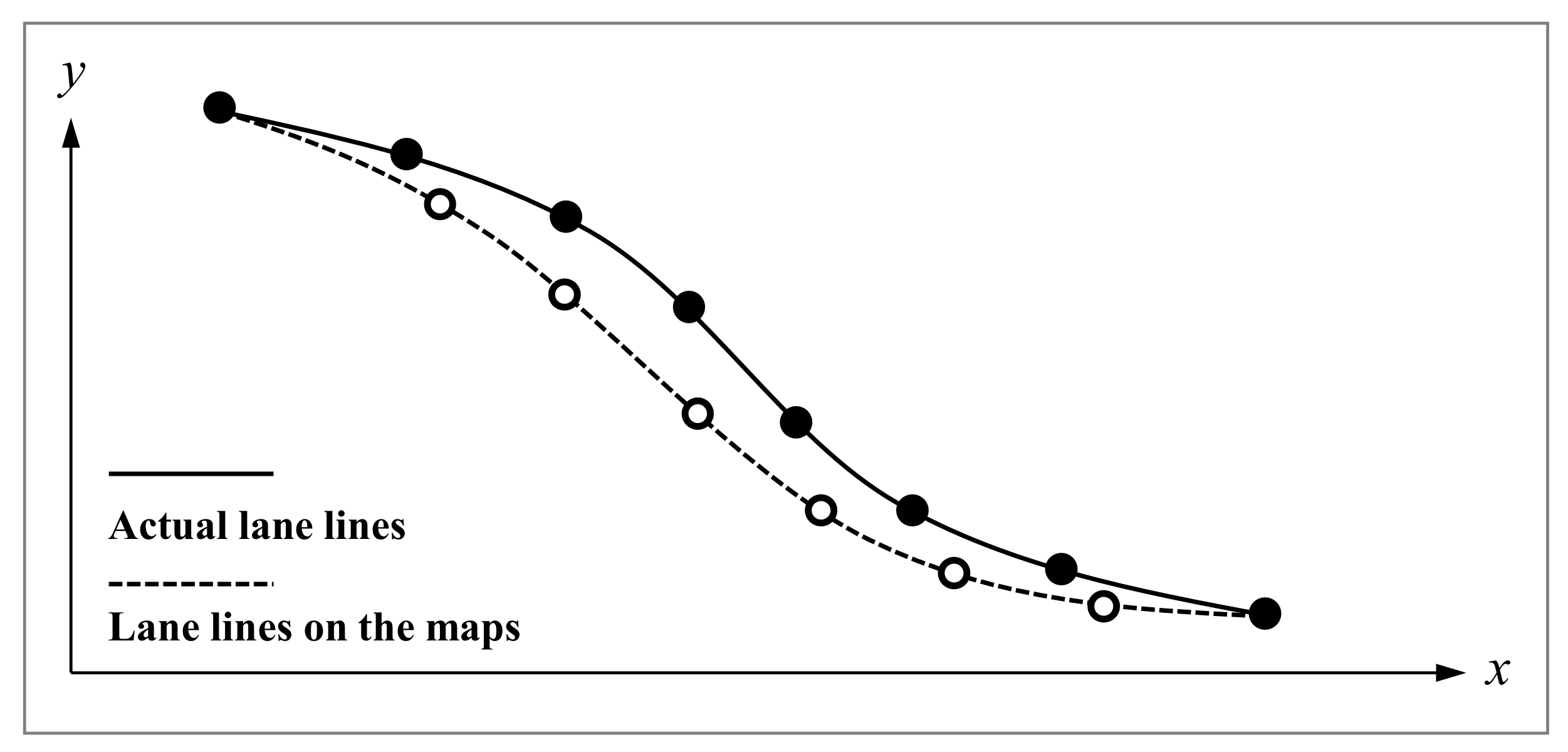
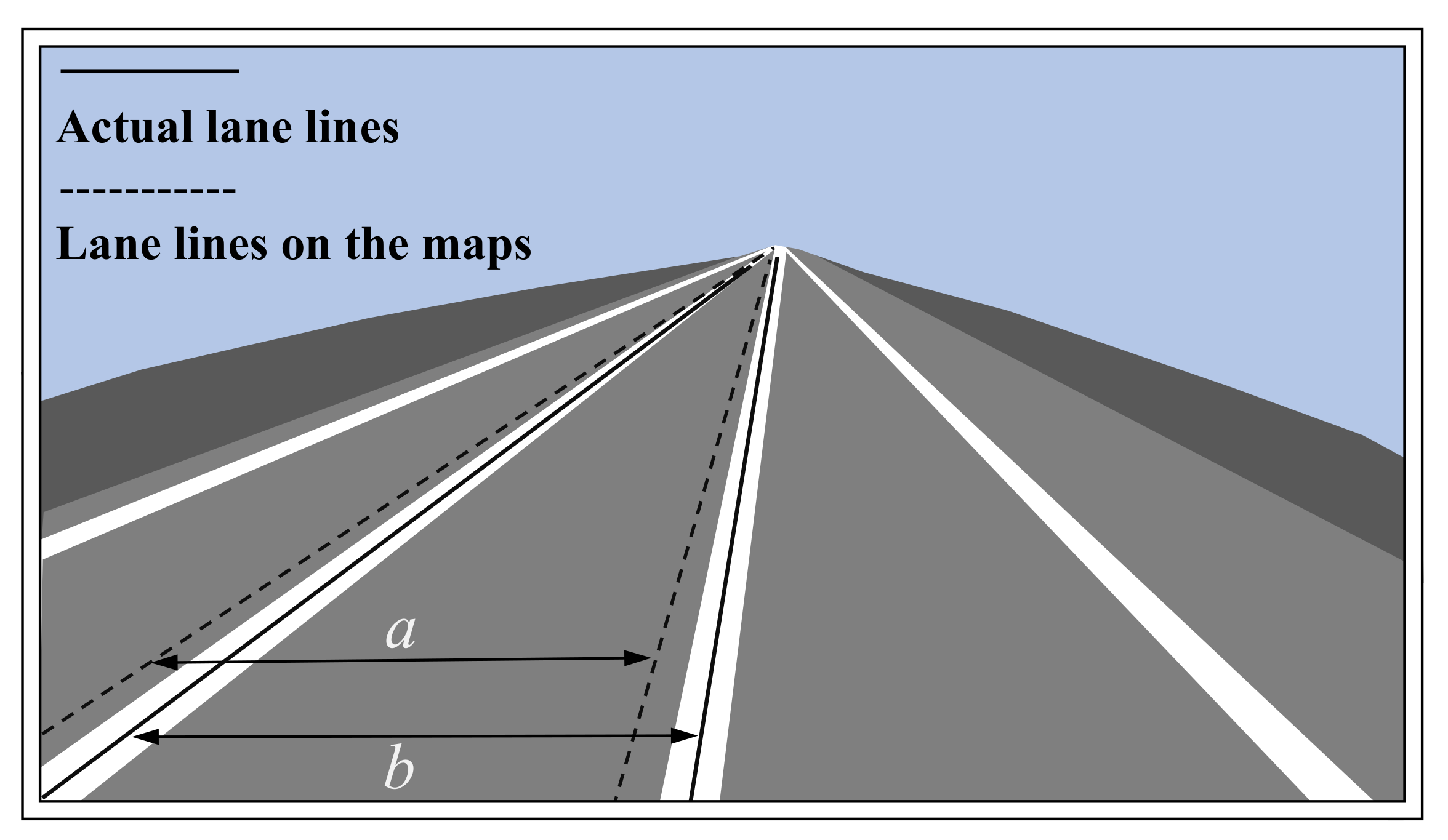

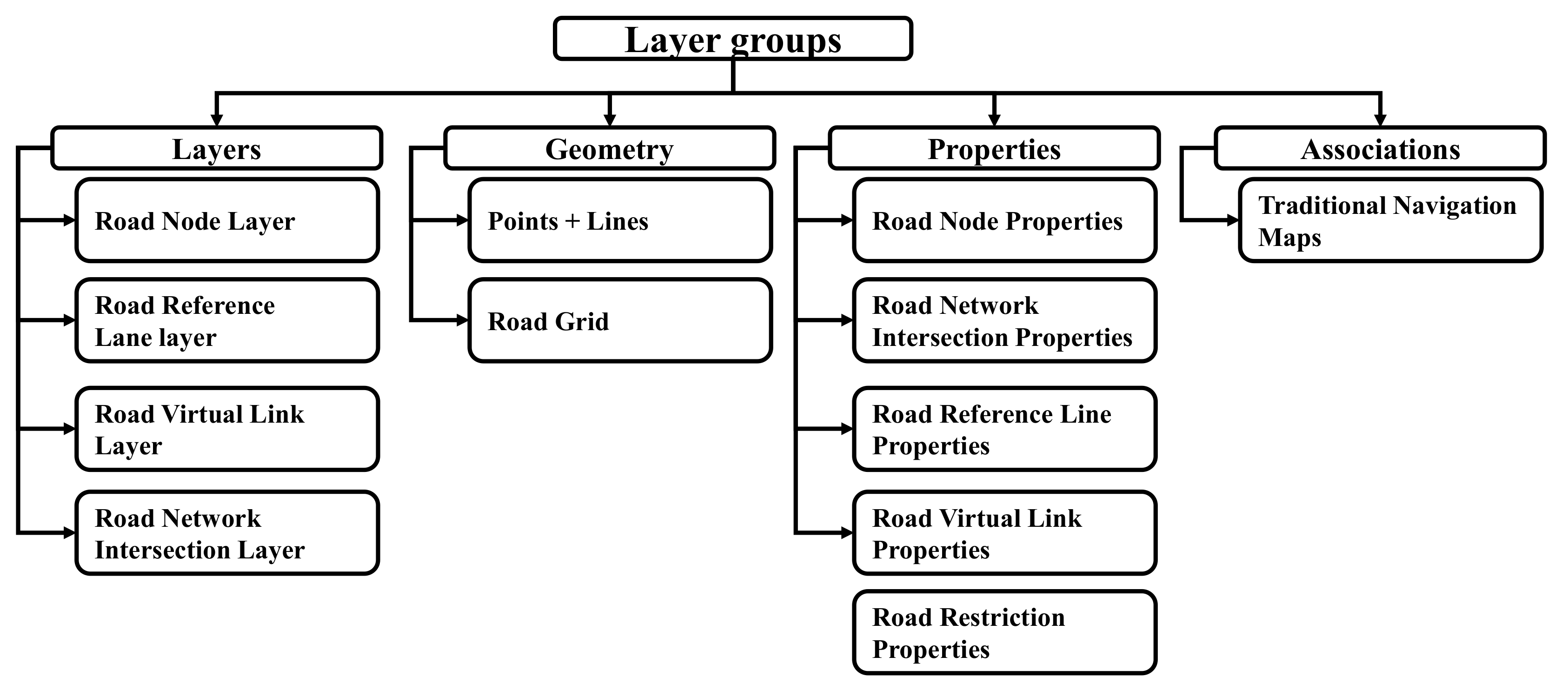

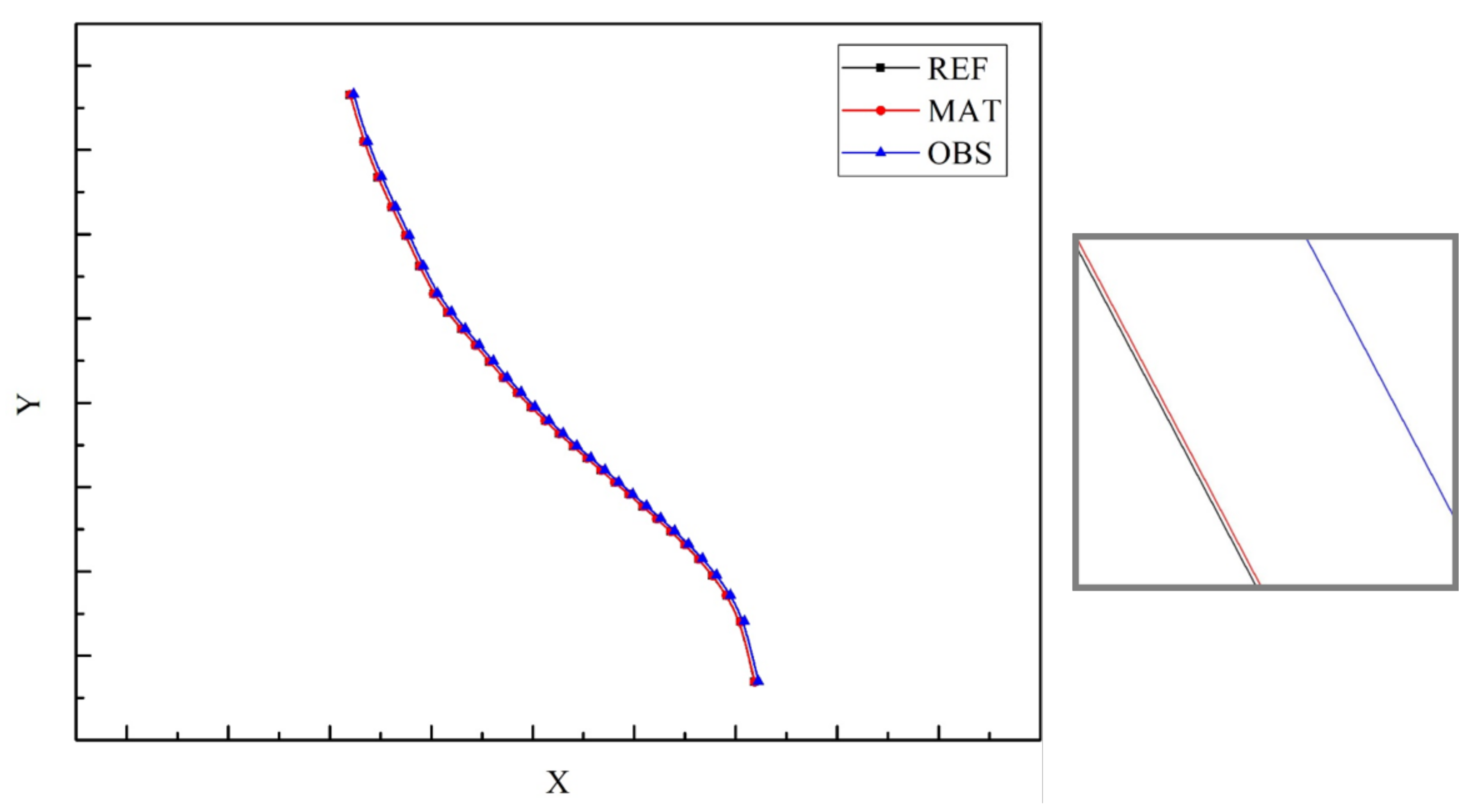
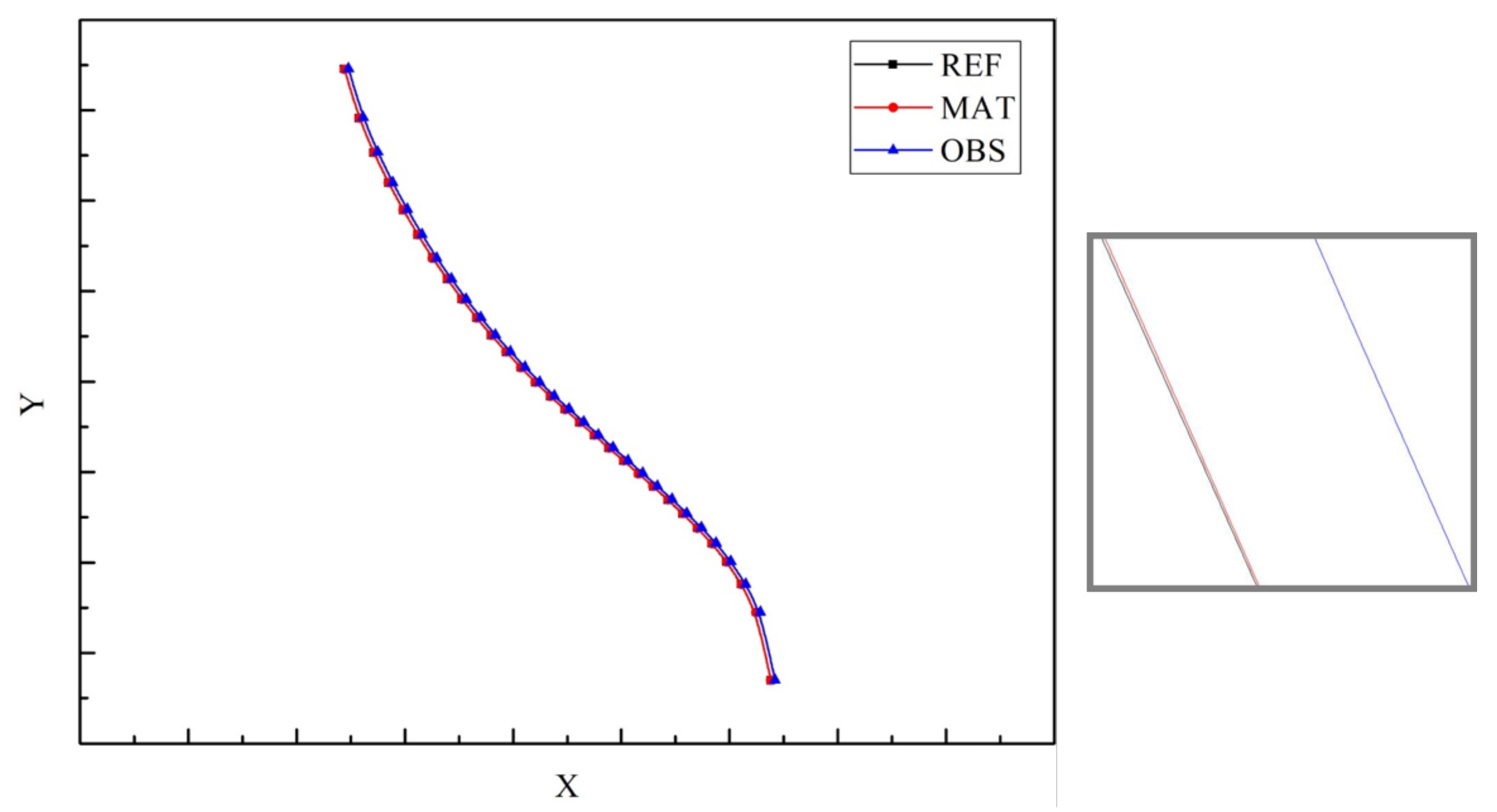

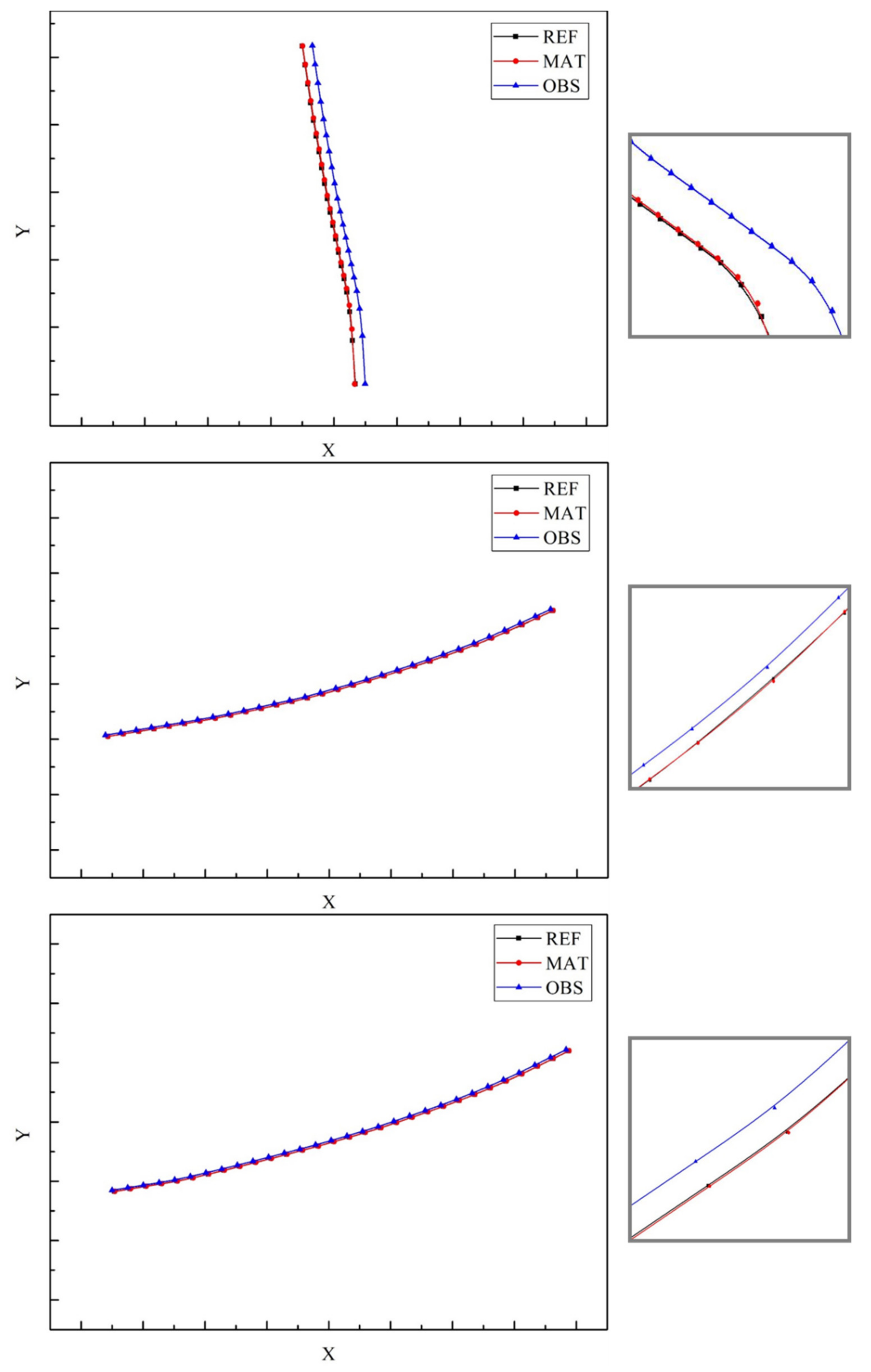

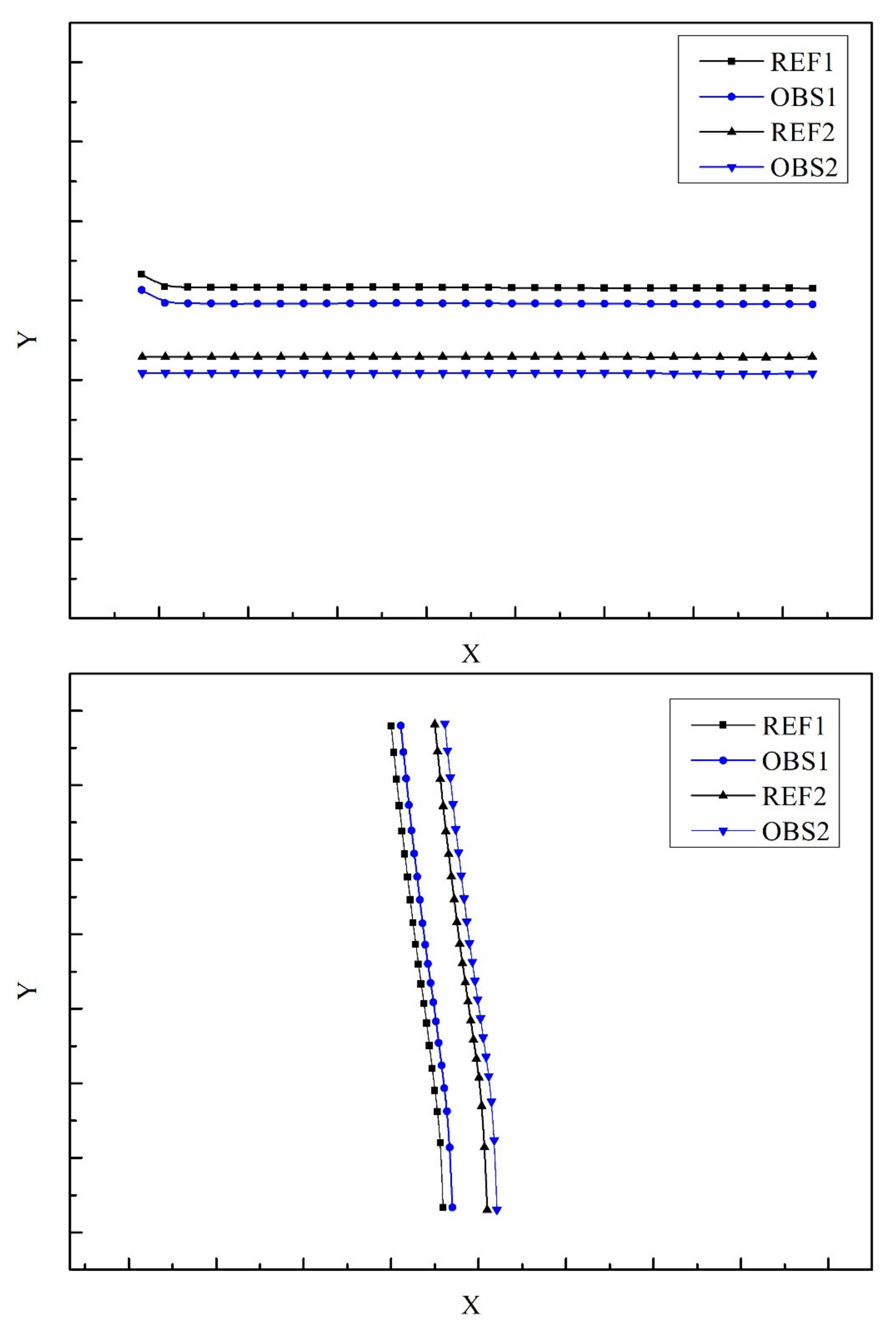
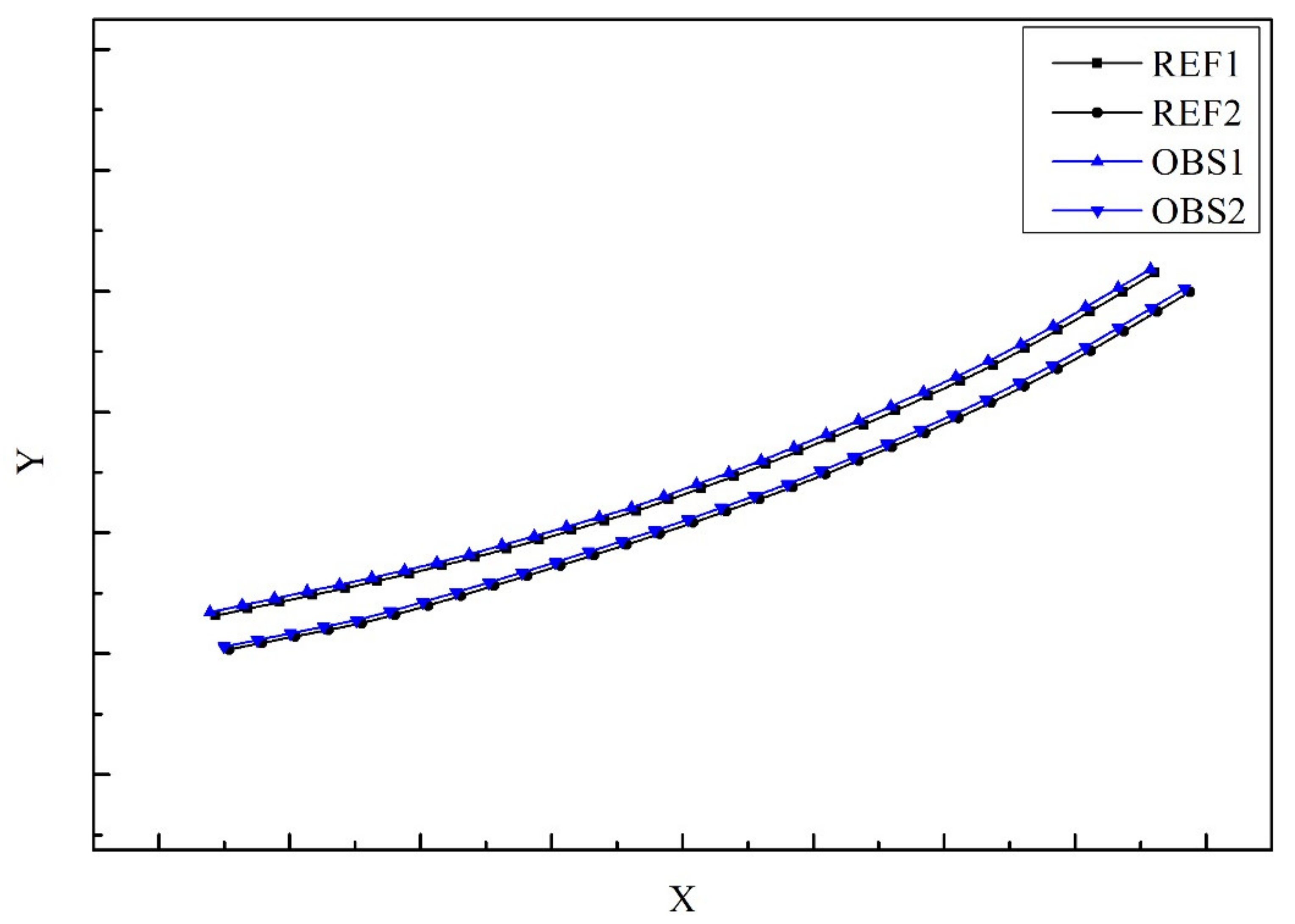
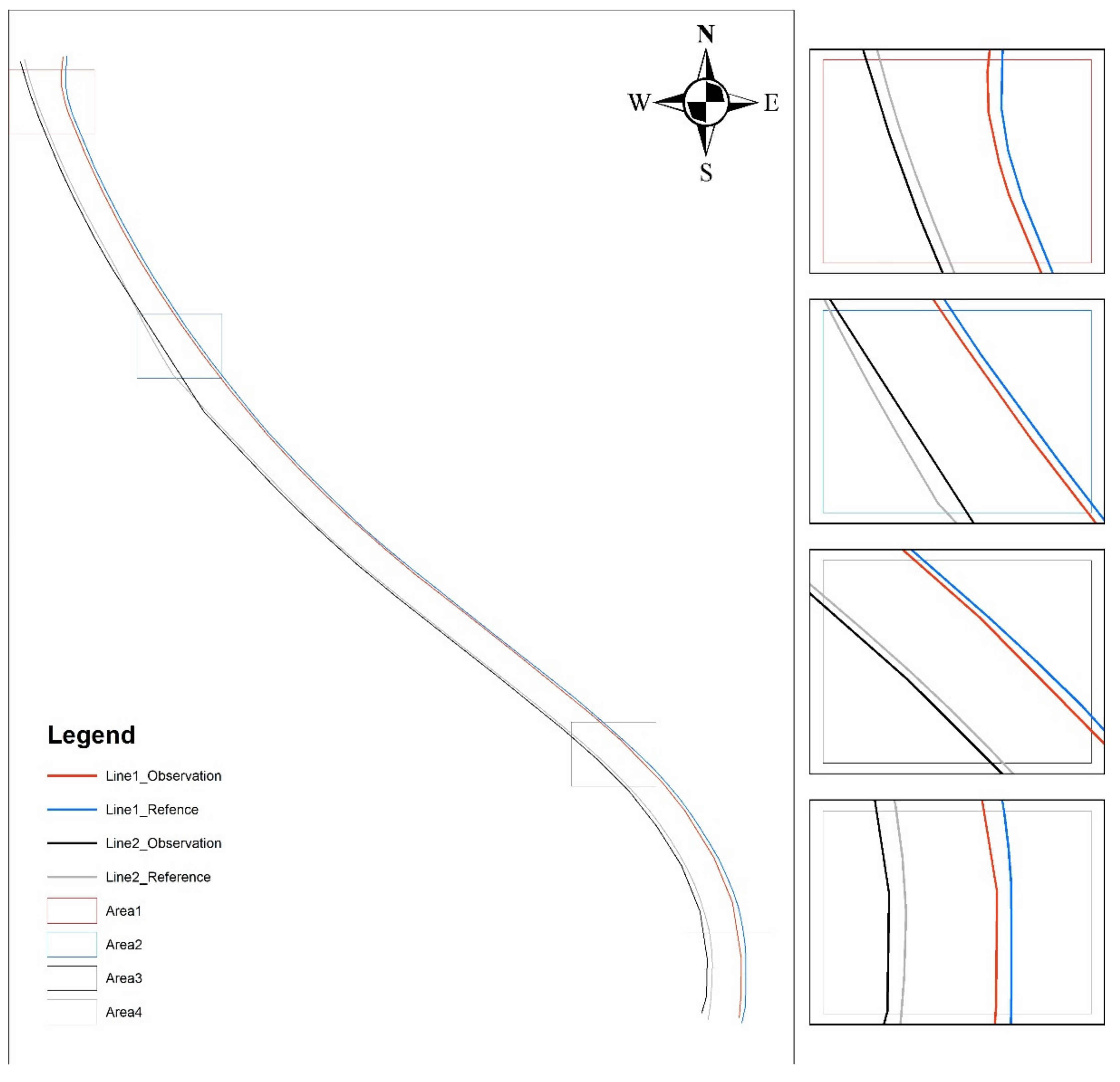
| Level | Name | Vehicle Lateral and Longitudinal Movement Control | Target and Incident Detection and Response | Dynamic Driving Task Takeover | Design Operating Conditions | Map Data Content |
|---|---|---|---|---|---|---|
| 0 | Emergency assistance | Drivers | Drivers and systems | Drivers | Restrictions apply | Traditional maps |
| 1 | Partial driving assistance | Drivers and systems | Drivers and systems | Drivers | Restrictions apply | Traditional maps |
| 2 | Combined driving assistance | Systems | Drivers and systems | Drivers | Restrictions apply | Traditional maps + ADAS data |
| 3 | Conditional autopilot | Systems | Systems | Dynamic driving tasks take over the user | Restrictions apply | Static HDMs |
| 4 | Highly automated driving | Systems | Systems | Systems | Restrictions apply | Dynamic HDMs |
| 5 | Fully automated driving | Systems | Systems | Systems | No restrictions | Smart HDMs |
| Lane Number | Median Deviation Error | Real Length of the Curve | Median Error per 100 m | Limit Error of the Section |
|---|---|---|---|---|
| Section 1 | 0.132 | 166.5 m | 0.080 | 0.159 |
| Section 2 | 0.134 | 203.3 m | 0.066 | 0.132 |
| Section 3 | 0.143 | 155.7 m | 0.092 | 0.185 |
| Section 4 | 0.163 | 179.3 m | 0.091 | 0.181 |
| Lane Number | Median Error | Limit Error |
|---|---|---|
| Section 1 | 0.132 | 0.159 |
| Section 2 | 0.134 | 0.132 |
| Section 3 | 0.143 | 0.185 |
| Section 4 | 0.163 | 0.181 |
| Lane Number | Relative Accuracy of the Vertical | Relative Accuracy of the Horizontal |
|---|---|---|
| Section 1 | 0.091 | 0.0025 |
| Section 2 | 0.127 | 0.0031 |
| Section 3 | 0.151 | 0.0032 |
| Section 4 | 0.116 | 0.0028 |
Publisher’s Note: MDPI stays neutral with regard to jurisdictional claims in published maps and institutional affiliations. |
© 2021 by the authors. Licensee MDPI, Basel, Switzerland. This article is an open access article distributed under the terms and conditions of the Creative Commons Attribution (CC BY) license (https://creativecommons.org/licenses/by/4.0/).
Share and Cite
Yu, T.; Huang, H.; Jiang, N.; Acharya, T.D. Study on Relative Accuracy and Verification Method of High-Definition Maps for Autonomous Driving. ISPRS Int. J. Geo-Inf. 2021, 10, 761. https://doi.org/10.3390/ijgi10110761
Yu T, Huang H, Jiang N, Acharya TD. Study on Relative Accuracy and Verification Method of High-Definition Maps for Autonomous Driving. ISPRS International Journal of Geo-Information. 2021; 10(11):761. https://doi.org/10.3390/ijgi10110761
Chicago/Turabian StyleYu, Tengfei, He Huang, Nana Jiang, and Tri Dev Acharya. 2021. "Study on Relative Accuracy and Verification Method of High-Definition Maps for Autonomous Driving" ISPRS International Journal of Geo-Information 10, no. 11: 761. https://doi.org/10.3390/ijgi10110761







